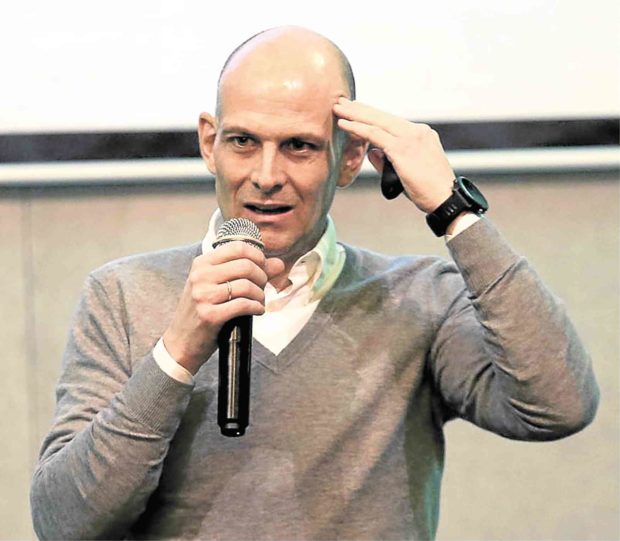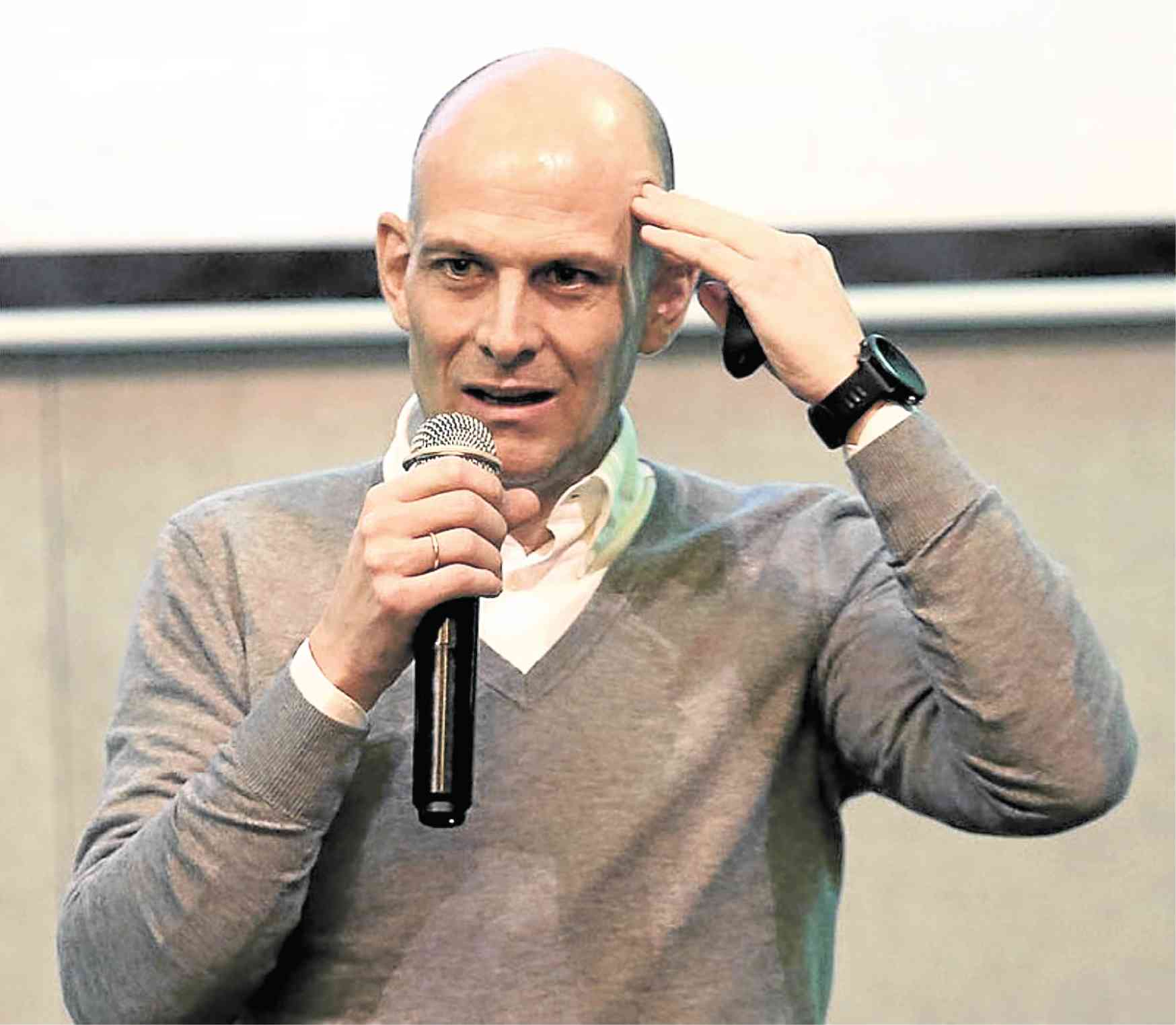
The client was a strained, 48-year-old CEO. The lines on his health graph indicated that he hardly rested, took short lunch breaks and lacked sleep.
“Do you think he’s productive?” German corporate mindfulness coach Florian Wolf asked the audience at Manila House.
Recovery from activity is essential to a balanced life. Wolf advised his client to sleep earlier by two minutes and to start his day with deep breathing two minutes for 66 days.
Today, the CEO recharges with breathing exercises at lunchtime and at night.
“If you want to start something new, don’t think of doing the long, intense way. Start with little things because our habits are created by regularity,” said Wolf, founder and CEO of YourPrevention, an international group of doctors and coaches.
The group aims to boost an individual’s resilience or calmness in a fast-paced world by reconnecting with the inner self and developing new habits.
He recently gave a lecture on corporate mindfulness, organized by Dr. Christopher Rex Gloria, an international board member of YourPrevention, and founder of Royal Preventive Clinic.
Self-care
The term “stress management,” popular in the ’90s, has been replaced with “self-care” or “mindfulness.”
The focus on coping with pressures has changed from relaxation techniques and healthy practices to understanding the self and taking action regularly to develop changes.
“Mindfulness means being clear within yourself,” said Wolf.
Citing the popular quote, “The same boiling water that softens the potato hardens the egg,” Wolf explained, “It’s about who you are and not about the circumstances.”
Mindfulness can be learned in three steps:
1) Attention and maintaining it
2) Perception or being aware of one’s thoughts
3) Emotion and action, or being motivated and implementing new habits
YourPrevention’s portfolio consists of big-time corporate clients in Europe. Credit Suisse, for instance, wanted an occupational health care program that consisted of nutrition, exercise and mindfulness.
Wolf stressed that the program would be more effective if it began with mindfulness: “Why would you want to change? If you are connected to yourself, you will want to change your nutrition and be physically active.”
YourPrevention incorporates neurobiology, the study of cells in the nervous system, and how they form pathways that deal with information and mediate behavior.
Clients undergo standardized testing procedures that combine biographic information, lifestyle and personality. The biophysical testing determines one’s stress level and ability to cope.
The personality tests analyze the individual’s tendencies to exhaustion that are caused by over-commitment, excessive hard work, perfectionism, anxiety, high demands on the self and from others, difficulties in saying no and disregarding bodily symptoms.
Inner attitude
Explaining how reactions start in the brain, Wolf pointed out that the prefrontal cortex, the part of the brain on the frontal lobe, differentiates humans from animals. It is involved in various behaviors, ethics, planning and personality traits and helps humans cope with stress.
However, when one is chronically stressed, the amygdala, a group of nerve cells beneath the temples, becomes more dominant. It functions as the center of emotion and fight-or-flight response.
Wolf gave the example of an executive who was annoyed by the daily traffic on a one-lane street on his way to the office. At the start of his work, he felt his day was already spoiled. The lecturer said if his prefrontal cortex was active, the executive’s reaction would have been more objective.
“He could take the bus, bicycle, leave (home) earlier or do home office. We can do many things if our brain is working properly instead of getting emotional,” said Wolf.
MRI findings of monks in meditation show that their prefrontal cortex is highly activated. “Meditating may seem like doing nothing. In fact, it is being present,” he said.–CONTRIBUTED













































